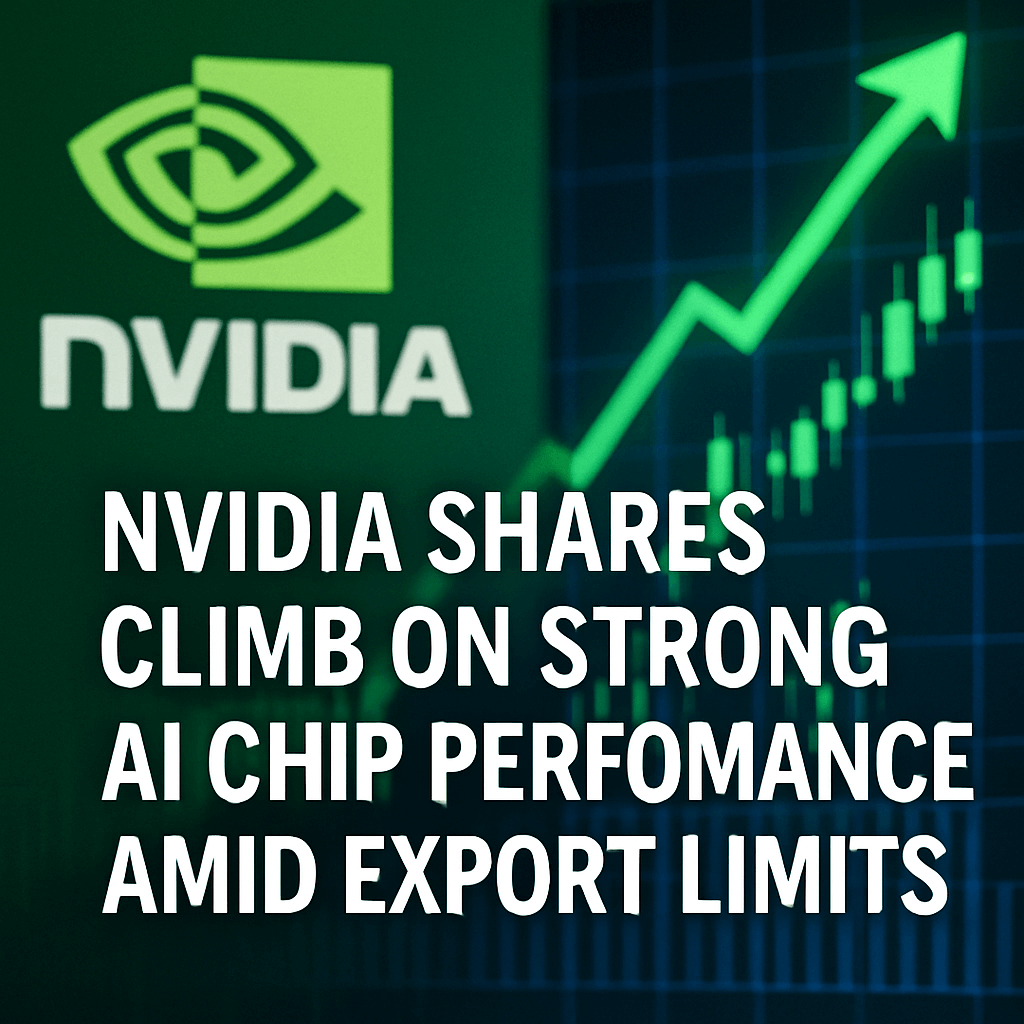Nvidia Shares Climb on Strong AI Chip Performance Amid Export Limits

Court Ruling Casts Doubt on 1977 IEEPA Tariff Authority
In a landmark decision, a three-judge federal appeals panel ruled that the International Emergency Economic Powers Act (IEEPA) of 1977 does not authorise the use of tariffs—a central pillar of the Trump administration’s trade strategy. Plaintiffs in several lawsuits argued former President Trump exceeded his authority by imposing broad import duties without explicit Congressional backing.
- The ruling specifically overturns key provisions used to justify double-digit levies on steel, aluminium, automobiles and other goods.
- It raises legal questions about existing tariffs currently paused for up to 90 days to facilitate ongoing trade negotiations.
- The administration has filed an immediate appeal; it remains unclear whether emergency power tariffs will be suspended during the appeals process.
“Just when traders thought they’d seen every twist in the tariff saga, the gavel dropped like a lightning bolt over the Pacific,” said Stephen Innes, chief global strategist at SPI Asset Management. “The ruling is at least a brief respite before the next thunderclap.”
Market Boost in U.S. and Asia-Pacific
Risk assets rallied on the back of the court’s decision, which eased uncertainty around trade policy and inflationary pressures:
- S&P 500 futures jumped 1.6% while Dow industrials futures rose 1.2%.
- Japan’s Nikkei 225 climbed 1.5% to 38,263, its highest level in four months, as Tokyo renewed appeals to rescind U.S. tariffs on steel and autos.
- The dollar surged to 146.06 yen from 144.87, reflecting a shift into safe-haven liquidity ahead of further trade developments.
- Australia’s benchmark S&P/ASX 200 added 0.3% to 8,419, buoyed by resource and financial stocks.
- South Korea’s Kospi jumped 1.4% to 2,708, helped by the Bank of Korea’s surprise rate cut to 2.50% from 2.75%.
Earnings Spotlight: Nvidia’s AI Dominance
Nvidia reported fiscal Q4 revenue of $21.5 billion, up 33% year-over-year, driven by data center sales of AI GPUs. Earnings per share (EPS) came in at $4.30, beating consensus estimates by 12%.
- Data center revenue: $15.3 billion (up 45% YoY)
- Gaming segment: $4.1 billion (up 15% YoY)
- Professional visualization and automotive combined: $2.1 billion
- Guidance: Q1 revenue expected at $23 billion ±2%, above Street’s $21.5 billion estimate
Technical Deep Dive: H100 vs A100 Chips
Nvidia’s Hopper H100 GPU—fabricated on TSMC’s 4N process—packs 80 billion transistors, delivering up to 9.3 petaFLOPS of FP8 AI performance. By contrast, the Ampere A100 (7nm) has 54 billion transistors and peaks at 4.9 petaFLOPS FP16.
- Memory: H100 uses 80 GB HBM3 at 3.2 Gbps, providing 3.2 TB/s bandwidth vs A100’s 40 GB HBM2e.
- Tensor Cores: 192 per streaming multiprocessor (SM), doubling throughput for matrix operations.
- Interconnect: NVLink 4.0 doubles bidirectional bandwidth to 900 GB/s for multi-GPU scaling.
These technical advances underpin Nvidia’s data center ASP growth and support its 60% gross margin target.
Geopolitical Implications of Export Restrictions
On October 17, the U.S. Bureau of Industry and Security (BIS) tightened export controls on high-performance GPUs, requiring licenses for shipments to China, Hong Kong and select Middle Eastern countries. Key provisions include:
- Limiting sale of chips capable of >600 teraFLOPS FP16 to China without a BIS license.
- Restricting access to the Nvidia DGX AI supercomputing platforms.
- Impact on Chinese AI startups and cloud providers—Huawei, Baidu and Alibaba have begun sourcing alternative domestic accelerators.
Experts warn the measures could slow China’s AI training capacity by 12–18 months but also accelerate local chip design efforts. “This is a double‐edged sword—short-term deceleration, long-term fragmentation of the semiconductor supply chain,” says Carla Sands, senior fellow at the Tech Policy Institute.
Fixed Income, FX and Commodities Movements
The yield on the 10-year U.S. Treasury rose to 4.47% from 4.43% following mixed Fed minutes. Traders remain sceptical on rate cuts amid persistent inflation risks:
- Fed outlook: Minutes indicate policymakers see upside inflation risk due to tariff uncertainty.
- Brent crude oil rose to $64.88/bbl, up $0.56, on OPEC+ production cuts confidence.
- Euro weakened to $1.1239 vs. $1.1292 after disappointing Eurozone PMI readings.
Outlook and Expert Commentary
“With Nvidia commanding 90% of the market for high-end AI GPUs, the export curbs may carve out a temporary moat—but global demand remains insatiable,” notes Tom Lee, head of research at Fundstrat, forecasting Nvidia’s revenue could exceed $100 billion in fiscal 2025.
Investors will watch upcoming U.S. CPI data and China’s Q4 GDP figures for clues on rate pivot timing. Meanwhile, the legal battle over tariff authority adds another layer of uncertainty to global trade dynamics.